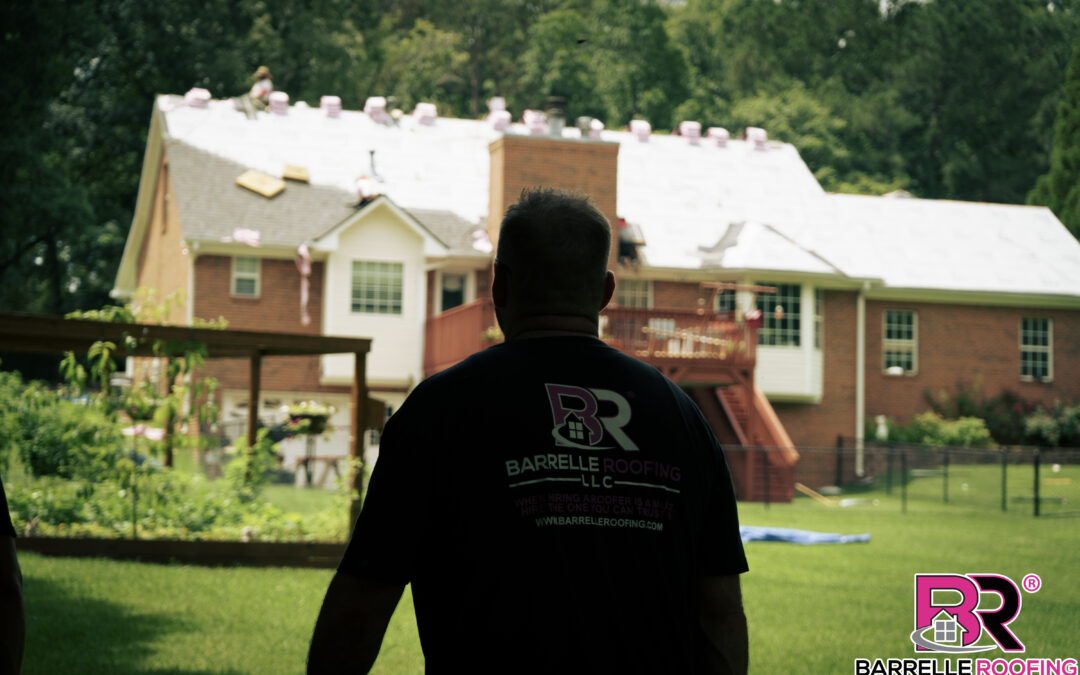Loganville Roof Replacement
When most people think of a roof, they picture the shingles or metal panels that cover the top of a house. But a roofing system is much more than what meets the eye.

It’s a carefully designed structure made up of multiple layers, each working together to protect your home from the elements. Whether you’re replacing your roof or just want to understand how it functions, knowing the components of a complete roofing system can help you make informed decisions and maintain your investment for years to come.
Learn more HERE!
1. Roof Decking (Sheathing)
The foundation of your roofing system is the decking, typically made of plywood or OSB (oriented strand board). It’s attached to the rafters and serves as the base that supports all the roofing materials above. Over time, moisture damage can weaken the decking, which is why it’s essential to inspect it during roof replacements.
2. Underlayment
On top of the decking lies the underlayment—a water-resistant or waterproof layer that acts as a secondary barrier against moisture. It protects your home from wind-driven rain and ice dams. Synthetic underlayments are popular today due to their durability and resistance to tearing.
3. Ice and Water Shield
In colder climates or areas prone to heavy rain, an ice and water shield is applied in vulnerable spots such as valleys, eaves, and around chimneys. This self-adhering membrane helps prevent leaks caused by ice dams and pooling water.
4. Roof Flashing
Flashing is made of metal (usually aluminum or galvanized steel) and is used to seal and protect joints and edges where the roof meets vertical surfaces like walls, chimneys, or skylights. Without properly installed flashing, these areas are common spots for leaks to develop.
5. Ventilation System
Proper ventilation allows hot, moist air to escape from your attic, which helps regulate temperature, reduces energy costs, and extends the life of your roofing materials. A well-ventilated roof typically includes intake vents (usually at the soffits) and exhaust vents (like ridge or box vents).
6. Drip Edge
The drip edge is a metal strip installed along the edges of the roof. It directs water away from the fascia and into the gutters, preventing rot and water damage to the underlying structure.
7. Roof Covering (Shingles, Tiles, or Metal Panels)
This is the outermost layer and the part of the roof you see. Asphalt shingles are the most common in the U.S. due to their affordability and ease of installation. Other options include metal, slate, clay tiles, and synthetic materials, each offering unique benefits in terms of durability, appearance, and cost.
8. Ridge Cap Shingles
Ridge cap shingles are installed at the peak of your roof. They not only add a finished look but also help to seal the roof and allow ventilation.
Conclusion
Your roof is more than just shingles—it’s a complete system designed to shield your home from weather, improve energy efficiency, and provide peace of mind. Understanding how each component works together allows you to identify potential problems early and ensures that any repairs or replacements are done right. When it’s time for a roof inspection or upgrade, working with a trusted roofing professional can make all the difference in protecting your most valuable investment—your home.t preparation, it can be a smooth and successful experience. Take the time to prep your home, know what to expect after scheduling your roof replacement, communicate clearly, and trust your contractor. Before you know it, you’ll have a brand-new roof providing peace of mind for years to come.
